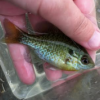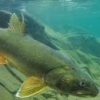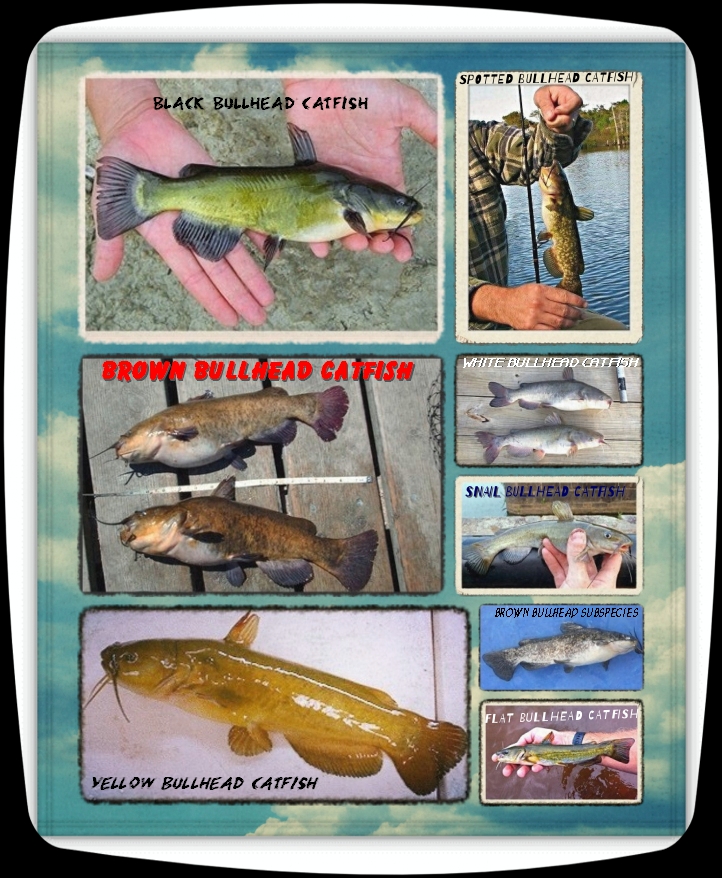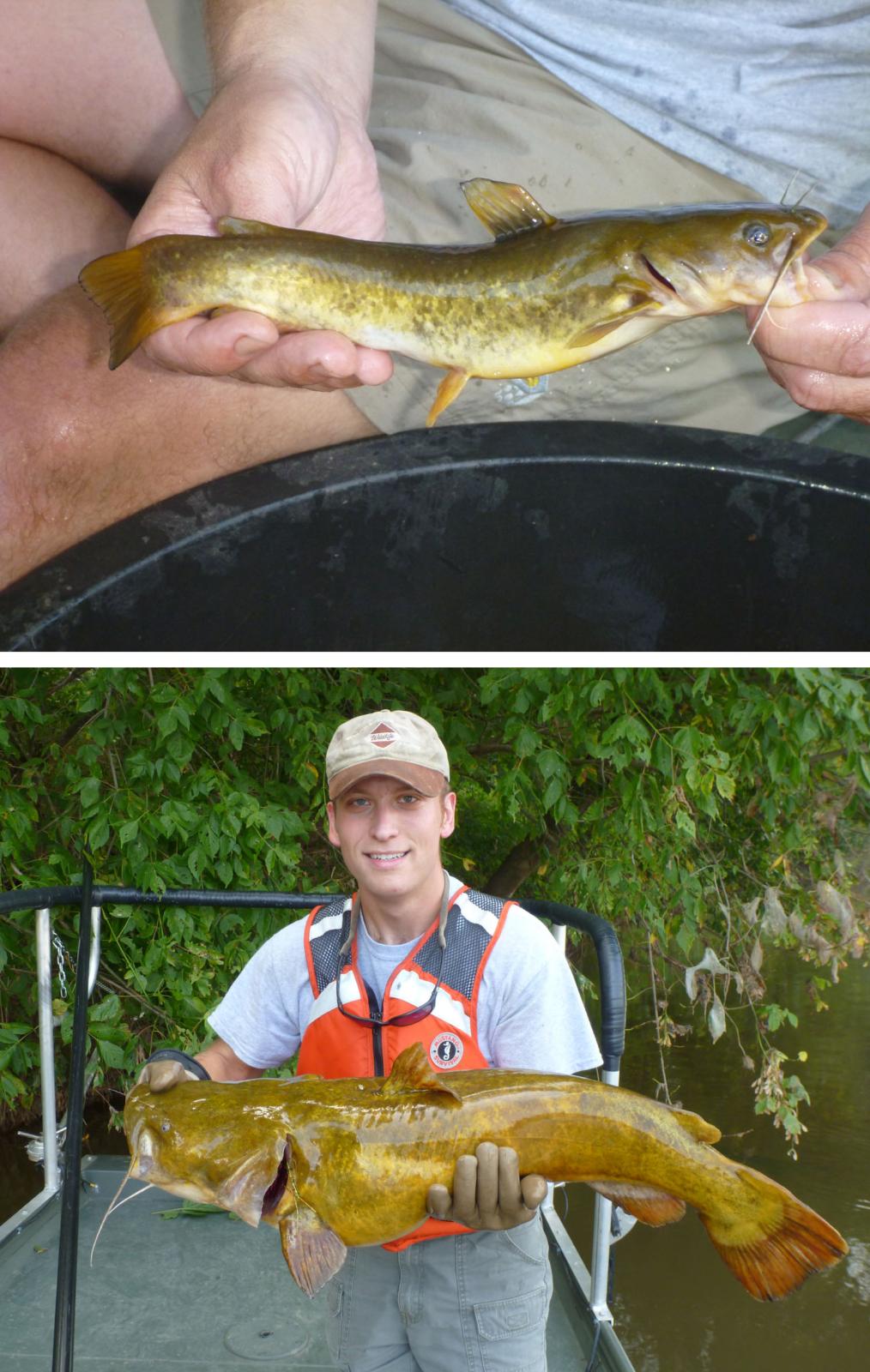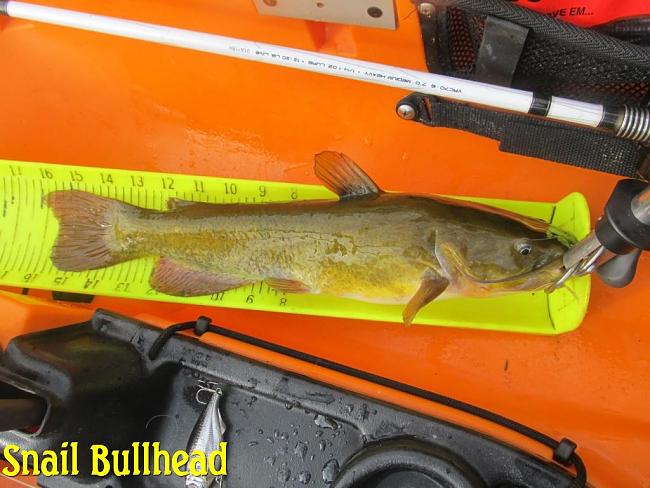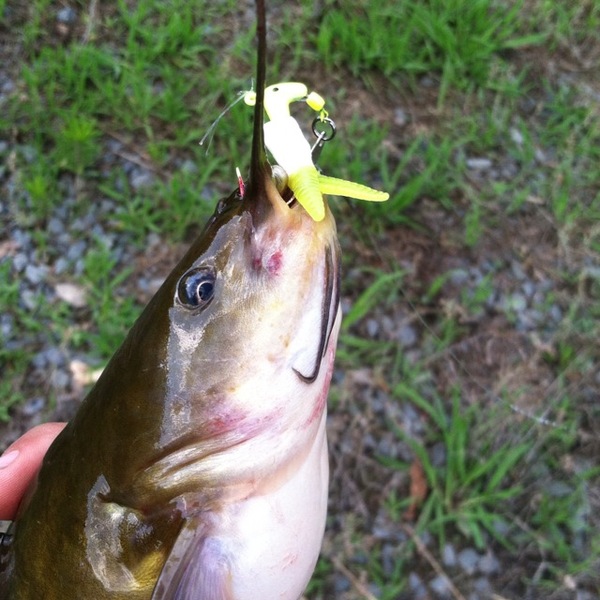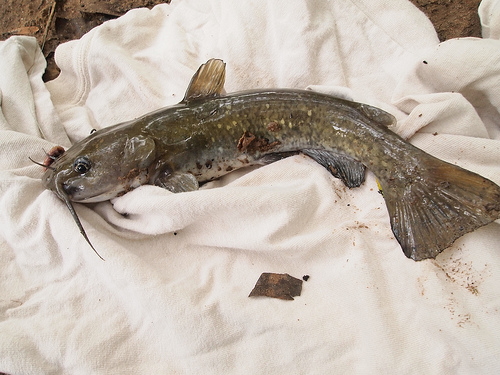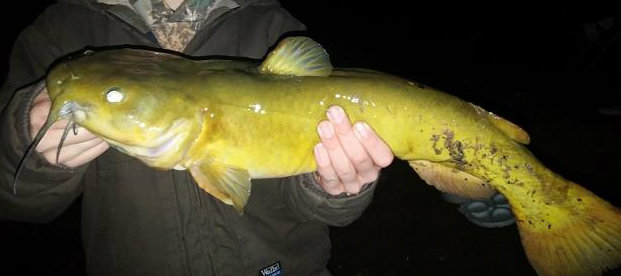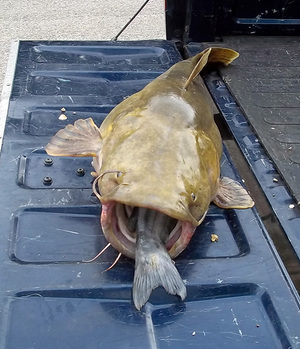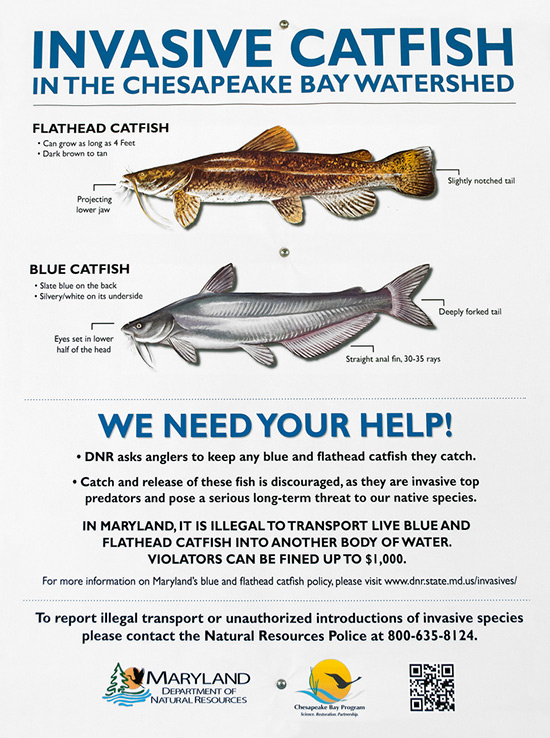I just can't get over how pretty these bullheads are!
#21

Posted 26 December 2014 - 11:42 AM
Gerald Pottern
-----------------------
Hangin' on the Neuse
"Taxonomy is the diaper used to organize the mess of evolution into discrete packages" - M.Sandel
#22

Posted 26 December 2014 - 05:43 PM
#24

Posted 26 December 2014 - 10:02 PM
Brian J. Zimmerman
Gambier, Ohio - Kokosing River Drainage
#25

Posted 26 December 2014 - 10:53 PM
A. brunnues from north of Atlanta in the Chattahoochee, a small individual

A large individual from the type locality in the Ocmulgee drainage southeast of Atlanta.

#28

Posted 06 March 2015 - 04:18 PM
BREED THOSE DALMATIAN KITTIES. They need to be an easily available thing.
Lol. Myself and two other members of planet catfish collaborated a while back on breeding Ameiurus sps., we all agreed that we'd attempt to spawn them indoors within the next could of years. I was planning on attempting yellows this spring-summer but unfortunately the planned broodstock aren't growing fast enough to be sexually mature, so maybe I'll have some luck in another year or two once they're big enough.
#29

Posted 30 December 2015 - 01:58 PM
I saw the post here about the Flat, Snail, and Spotted Bullhead and I have enjoyed reading all the post. As you probably know the Snail, Flat, and Spotted Bullhead Catfish are very localized to only a few states in the southeast, and have experienced large declines due to the introduction and predation of the Flathead Catfish. There appears to be alot of confusion among people attempting to identify what kind of Bullhead they have caught. Most people don't know one Bullhead Catfish from another. I have created the chart below in hopes it will help people identify which kind Bullhead they catching, and perhaps maintaining in their aquarium.
There are 7 kinds of Bullhead Catfish that swim in U.S. waters. I have 8 listed. Two types of Brown Bullheads are listed. The Brown Bullhead Sub-species "Speckled Cat" is considered a southern variant of the Brown Bullhead. All 7 are of interest to anglers and grow to harvestable size.
Pictured Above: Flat Bullhead Catfish
Pictured Below: Flathead Catfish
Edited by Osprey, 30 December 2015 - 02:40 PM.
#30

Posted 30 December 2015 - 03:56 PM
I've spent most of my time over the last 10 months in south Georgia along the Chattahoochee River. We've caught 5 of the bullheads along the Hooch and its tributaries. Snails were the most commonly found bullhead, but restricted to flowing tributary streams. Yellows and blacks were very rare, but mostly restricted to tributaries. Browns were very common in mainstem Hooch and its backwaters. Spotted bullheads were rare and only found along mainstem margins with woody structure in summer months. Here are some photos for snail, spotted, and "southern" brown bullheads.
Willie P
#31

Posted 30 December 2015 - 05:13 PM
Now that this fish is a year older, it is looking more like the "typical" bullhead. In other words, the 'speckling' has been muted by a brown 'overtone'. Here's a couple of q&d pictures:
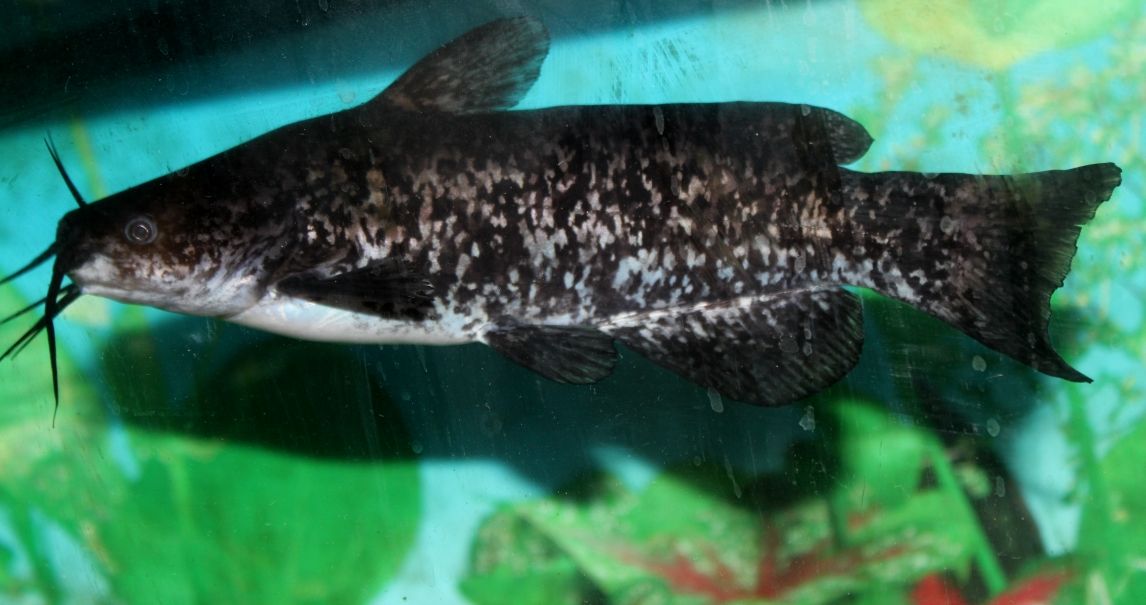

Still not "spots" in the sense that the spotted catfish spots are circular and these are rectangular, but the pattern remains even if muted.
Paul
PS - I just saw your post UncleWillie. Accordingly, I would call the above "southern".
Paul
Edited by gitano, 30 December 2015 - 06:00 PM.
#32

Posted 30 December 2015 - 05:50 PM
Those are great pictures guys. I know it's often reported the Flat, Snail, and Spotted Bullhead don't get much more than 9 or 10 inches. I'm sure that's true in small creeks and rivers. Excluding the White Catfish, they seem to get as big as any other Bullhead. I know they in fact get much bigger in large rivers, lakes and ponds.
All the fish pictured are Snail Bullheads
Edited by Osprey, 30 December 2015 - 06:07 PM.
#33

Posted 30 December 2015 - 05:58 PM
Introduced Flathead catfish may also be a factor in the disappearance of Carolina Madtoms from most of the Neuse River basin and lower half of the Tar River basin in NC (the only rivers where this species occurs). And some of the Atlantic slope sucker species are taking a hit too. possibly from Flatheads.
Gerald Pottern
-----------------------
Hangin' on the Neuse
"Taxonomy is the diaper used to organize the mess of evolution into discrete packages" - M.Sandel
#34

Posted 30 December 2015 - 06:10 PM
Wow Osprey that last pic of Snail Bullhead must be close to 24" ~ twice the size listed in the Peterson Field Guide and Freshwater Fishes of NC. Head shape looks right but I can't see the characteristic dark dorsal blotch. Do large ones lose it? Or does it fade away at night?
Gerald Pottern
-----------------------
Hangin' on the Neuse
"Taxonomy is the diaper used to organize the mess of evolution into discrete packages" - M.Sandel
#35

Posted 30 December 2015 - 06:32 PM
Oh without a doubt! Flathead Catfish are opportunistic indiscriminate apex predators through & through. What makes them even more formidable is their large size and huge mouths. I've seen small flatheads try to eat a Bullhead their same size. A Flathead of 8 pounds or more has no problem choking down a two pound bass or channel cat. Some say the fish fauna will eventually adapt to the new predator. I'm sure some fish will adapt, but I have no doubt others will succumb without intervention.
Edited by Osprey, 30 December 2015 - 06:32 PM.
#36

Posted 30 December 2015 - 06:45 PM
Hi Gerald, in some locations as the Snail Bullhead matures the mottling and dark spot at the base of the dorsal fin tends to fade out somewhat. It's still present, but isn't near as bold as can be seen in the smaller fish. In the larger Snails you need good lighting to see the faded mottling and the dorsal spot.
Snail bullheads between 2 and 5 pounds were fairly common on Lake Oconee years ago. Since the introduction of Flatheads and Blue Catfish rarely ever catch them out of the lake anymore.
Edited by Osprey, 30 December 2015 - 06:58 PM.
#37

Posted 30 December 2015 - 07:50 PM
Why must people move fish? Not much else in the world bothers me more. What is a thousand times worse is introduction of "exotics" by natural resource managers. One would think that practice went out 50 years ago, but sadly, there are only too many of them, ESPECIALLY fisheries biologists, that continue the practice. I can find some level of forgiveness/excuse for ignorance, but the stupidity associated with "moving" fish is mind-boggling when it is perpetrated by people supposedly scientifically trained. I won't apologize if anyone is offended by my blunt comments. There's simply no good excuse for that level of stupidity.
Paul
#38

Posted 31 December 2015 - 01:38 AM
I couldn't agree more. There needs to be more education geared towards the public about the impacts of moving fish around. Especially large fish. Then again it only takes one igornorant or selfish individual to decide they are going to do it regardless. The saying "it only takes one or a few bad apples to spoil the whole barrel" rings true in this case. If not impossible, it's very difficult and expensive to unring a bell.
I think increased promotion of native fishes to aquarium hobbyist, garden pond owners, private pond and lake owners would be beneficial to public awareness. Here's an educational video put out by Nebraska Game and Parks Fisheries Outreach Program, Manager Daryl Bauer talks about alternatives to goldfish and koi for backyard ponds. A good video, but more educational material needs to be put on sight in fishing area's to convince anglers it's in their best interest to value all the native fauna. How to best do this is beyond my expertise? It seems like the Maryland DNR has a good educational program about invasive non-native fish. I just wish more states would take notice of what they are doing to educate the public.
Native Nebraska Fish
We Need Your Help
With support from the Bay Program, the Maryland DNR has established more than 150 signs at water access points and kiosks around the state to help anglers identify, catch, keep and kill all invasive species, while Maryland Seafood has escalated its efforts to market the fish to restaurants and boost consumer demand.
“Humans are great at overfishing things,” said Maryland Seafood Marketing Director Steve Vilnit. “And the northern snakehead, the blue & flathead catfish are species that we want to overfish.”
Edited by Osprey, 31 December 2015 - 01:55 AM.
#39

Posted 31 December 2015 - 12:26 PM
There's simply no good excuse for that level of stupidity.
No good excuse, but there's a widely accepted bad one: Sport fishing funds the agency.
Gerald Pottern
-----------------------
Hangin' on the Neuse
"Taxonomy is the diaper used to organize the mess of evolution into discrete packages" - M.Sandel
#40

Posted 31 December 2015 - 01:55 PM
I'm a sport fisherman myself, and I know many sports fishermen that feel exactly the way you and I do. Your right money can corrupt and skew common sense and often fisheries biologist are pressured with the impossible task of trying to keep everyone happy.
On a lighter note: Here is a video of a Savannah River Dive Featuring The Snail Bullhead.
Reply to this topic
0 user(s) are reading this topic
0 members, 0 guests, 0 anonymous users







